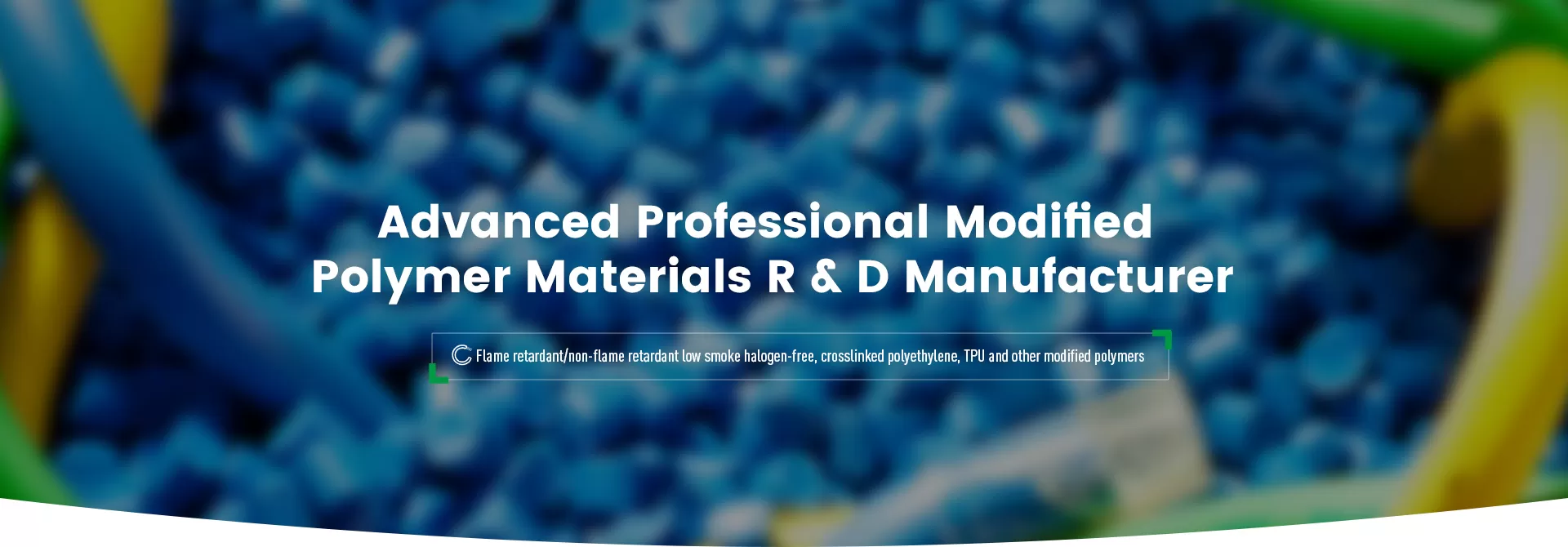
Introduction Crosslinked polyethylene (XLPE) is a versatile and reliable material widely used in cable insulation and sheathing. With its exceptional physical and electrical properties, XLPE has become the material of choice for various industrial applications, including medium- and high-voltage power cables. Its superior performance under demanding conditions makes it an essential material in modern wiring and cable solutions.
High Insulation Resistance: XLPE exhibits excellent resistance to electrical stress, often used in high-voltage cable sheaths.
Flame Retardance: The crosslinked polyethylene material, when treated with flame retardants, offers excellent fire-resistant properties.
Tensile Strength: XLPE resists deformation and damage under high pressure.
Low Smoke Zero Halogens (LSZH): Modified XLPE meets LSZH standards, minimizing toxic emissions during combustion.
Environmental Adaptability: XLPE can be used in high UV exposure, extreme temperatures, and humid environments.
Chemical Resistance: It has excellent resistance to oil, acids, and alkalis.
Stress Cracking Resistance: XLPE is highly resistant to cracking under prolonged mechanical stress.
Cost-Effectiveness: Its long lifespan and low maintenance requirements make it a cost-effective solution.
The crosslinking process transforms polyethylene into XLPE, significantly enhancing its physical and chemical properties. Compared to traditional polyethylene, crosslinked polyethylene improves heat resistance and durability, allowing it to maintain performance at higher temperatures. It also helps to increase tensile strength, flame retardance, and weather resistance.
Common crosslinking methods include:
Peroxide Crosslinking: By adding peroxides (such as dicumyl peroxide) to polyethylene, free radicals are generated at high temperatures, which then form cross-links with the polymer chains. This method is suitable for cable insulation materials.
Silane Crosslinking: Using silane coupling agents (like ethoxy silane) for chemical modification, this method can be carried out in a two-step or one-step process:
Two-step Method: Silane is grafted onto the polyethylene molecules, followed by crosslinking through moisture or water.
One-step Method: Silane is mixed with a catalyst and resin, then directly molded, with crosslinking occurring in a humid environment.
Radiation Crosslinking: High-energy electron beams or gamma rays are used to irradiate polyethylene, generating free radicals to form cross-links.
Chemical Crosslinking (Resin Crosslinking): Specific chemicals (such as crosslinking agents or catalysts) react with polyethylene to form crosslinked structures.
| Crosslinking method | Process characteristics | Application areas | Crosslinking degree |
| Peroxide crosslinking | High temperature, peroxide addition required | Cable insulation, power transmission cables | High |
| Silane crosslinking | Environmental moisture promotes cross-linking, simple operation | Cables for construction and home decoration | Medium |
| Radiation crosslinking | No chemical additives required, fast cross-linking speed | Cables for various fields | High controllable range |
| Chemical crosslinking | Cross-linking is completed through specific chemical reactions | Special plastics, composite materials | Medium to high |
Medium- and High-Voltage Power Cables: XLPE insulation is widely used in power cables designed for medium- and high-voltage systems, offering excellent electrical and thermal performance.
Industrial Wiring: XLPE is ideal for harsh industrial environments due to its resistance to mechanical stress and environmental factors.
Submarine and Underground Cables: XLPE's durability and moisture resistance are crucial for applications in challenging environments.
Renewable Energy Systems: XLPE cables are used in solar photovoltaic cables and wind power generation cables, where reliability and resistance to environmental factors are critical.
Rail and Transport Systems: Crosslinked polyethylene is commonly used for in-vehicle wiring in railway and transportation systems, such as locomotive communication lines.
Crosslinked polyethylene as a sheath material provides robust protection, ensuring cables are shielded from external damage (such as abrasion, moisture, and chemical exposure). This durability reduces maintenance costs and extends the lifespan of cables in demanding applications. XLPE sheathing is particularly valuable in applications requiring low-smoke, halogen-free (LSZH) properties.
| Property | XLPE | PVC | EPDM |
| Thermal Performance | Excellent | Moderate | Good |
| Stress Cracking Resistance | High | Low | Moderate |
| Flame Retardance | High (with LSZH) | High | Moderate |
| Chemical Resistance | Excellent | Moderate | High |
| Cost-Effectiveness | Long-term savings | Low initial cost | Moderate |
XLPE is widely used in industrial environments due to its exceptional performance:
Power Transmission: XLPE-insulated cables are crucial for medium- and high-voltage power transmission in utilities and industrial plants.
Wires and Cable Systems: XLPE cables offer enhanced durability and insulation for commercial and residential wiring applications.
Chemical Facilities: Due to its chemical resistance, XLPE cables are well-suited for facilities frequently exposed to acids, oils, and other corrosive substances.
Oil and Gas Industry: XLPE-sheathed cables offer moisture resistance and high tensile strength, ensuring reliable performance in pipeline and extraction facilities.
Stress Cracking Resistance and Its Importance
Stress cracking is a common issue with plastic materials under mechanical and environmental stress. XLPE's outstanding resistance to stress cracking extends the lifespan of cables and reduces maintenance costs. This property is especially important in underground and industrial cable installations, where cables face prolonged mechanical strain and exposure to harsh environments.
Safety is paramount in critical applications. XLPE’s flame retardant properties prevent fire spread, ensuring safety in residential, industrial, and transport systems. The option of formulating XLPE into an LSZH variant makes it suitable for areas where minimizing toxic emissions is essential, such as public transportation systems and densely populated buildings.
XLPE Insulated Power Cable Materials: These cables are used for power transmission in medium- and high-voltage applications, offering reliable performance.
XLPE Insulated Wire Materials: Designed for industrial and residential wiring, these cables are known for their high durability and resistance.
Specialized XLPE Cable Materials: Including flame-retardant and halogen-free versions to meet safety standards in sensitive environments.
Crosslinked polyethylene (XLPE) is widely used in cable insulation and sheathing due to its excellent electrical properties, flame retardance, and resistance to stress cracking. From industrial wiring to renewable energy system cables and high-voltage cables, XLPE materials deliver superior performance and durability. Its cost-effectiveness and versatility make it the preferred choice for demanding applications in modern cable systems.